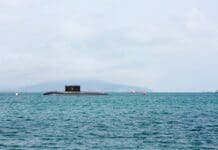This post is also available in:
 עברית (Hebrew)
עברית (Hebrew)
According to recent reports, Chinese researchers have developed a new 2-kilowatt fiber laser system that can function across a wide range of environmental conditions—without the need for external cooling or heating. The breakthrough technology is designed to operate reliably in temperatures between -50°C and 50°C, making it deployable virtually anywhere on the planet.
Unlike conventional high-power lasers that require bulky infrastructure such as refrigeration units or climate-controlled containers to maintain performance, this new system, developed by China’s National University of Defence Technology, remains stable in both arctic and desert environments. The laser is not only powerful enough to disable small drones and slice through industrial materials within a 1-kilometer range, but is also compact enough to be transported in a suitcase-sized case.
At the core of the innovation is a combination of advanced thermal design and efficient energy conversion. The researchers used a specialized ytterbium-doped fiber core, a rare earth element known for its thermal resilience. China’s dominance in ytterbium production provides a clear supply chain advantage in scaling this technology.
According to South China Morning Post, to reduce heat buildup, the system incorporates a novel laser pump that sends light in multiple directions—nine diodes forward and eighteen backward—improving energy distribution and thermal balance. Additionally, critical heat-sensitive components are kept outside the laser cavity to isolate them from temperature fluctuations.
A tightly controlled fiber diameter of just over 8 centimeters further minimizes energy loss from parasitic light paths, maintaining beam stability and precision. Tests conducted at standard room temperature showed the laser achieving a peak output of 2.47 kW with high beam quality—sufficient for both defense and industrial applications.
Whether for battlefield deployment or remote industrial use, this innovation marks a significant step forward in high-performance, climate-resilient directed energy systems.
The paper was published in the Chinese journal Higher Power Laser and Particle Beams in July.


























